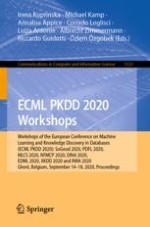1 Introduction
2 Methodology
Hyperedge | Definition |
|---|---|
E1 | Hyperedges for articles-authors |
E2 | Hyperedges for articles-topics |
E3 | Hyperedges for articles-sources |
E4 | Hyperedges for similar articles |
E5 | Hyperedges for users-articles |
3 Results
Scenarios | nDCG@10 | Precision@10 | Coverage |
|---|---|---|---|
baseline (b) | 0.196 | 0.210 | 0.108 |
(b) + article embeddings | 0.202 | 0.220 | 0.116 |
(b) + article embeddings + multi-stakeholder | 0.152 | 0.155 | 0.383 |
